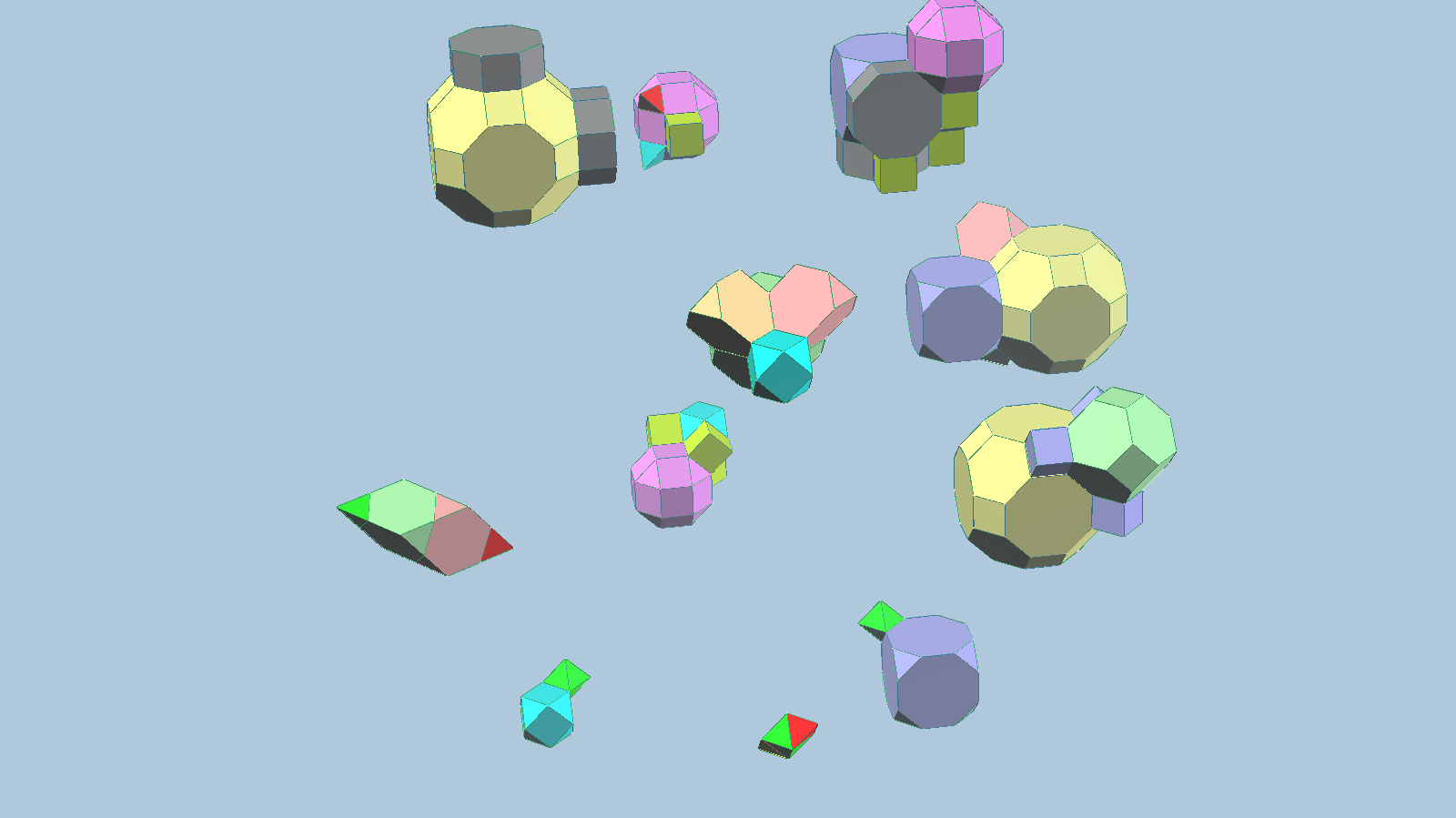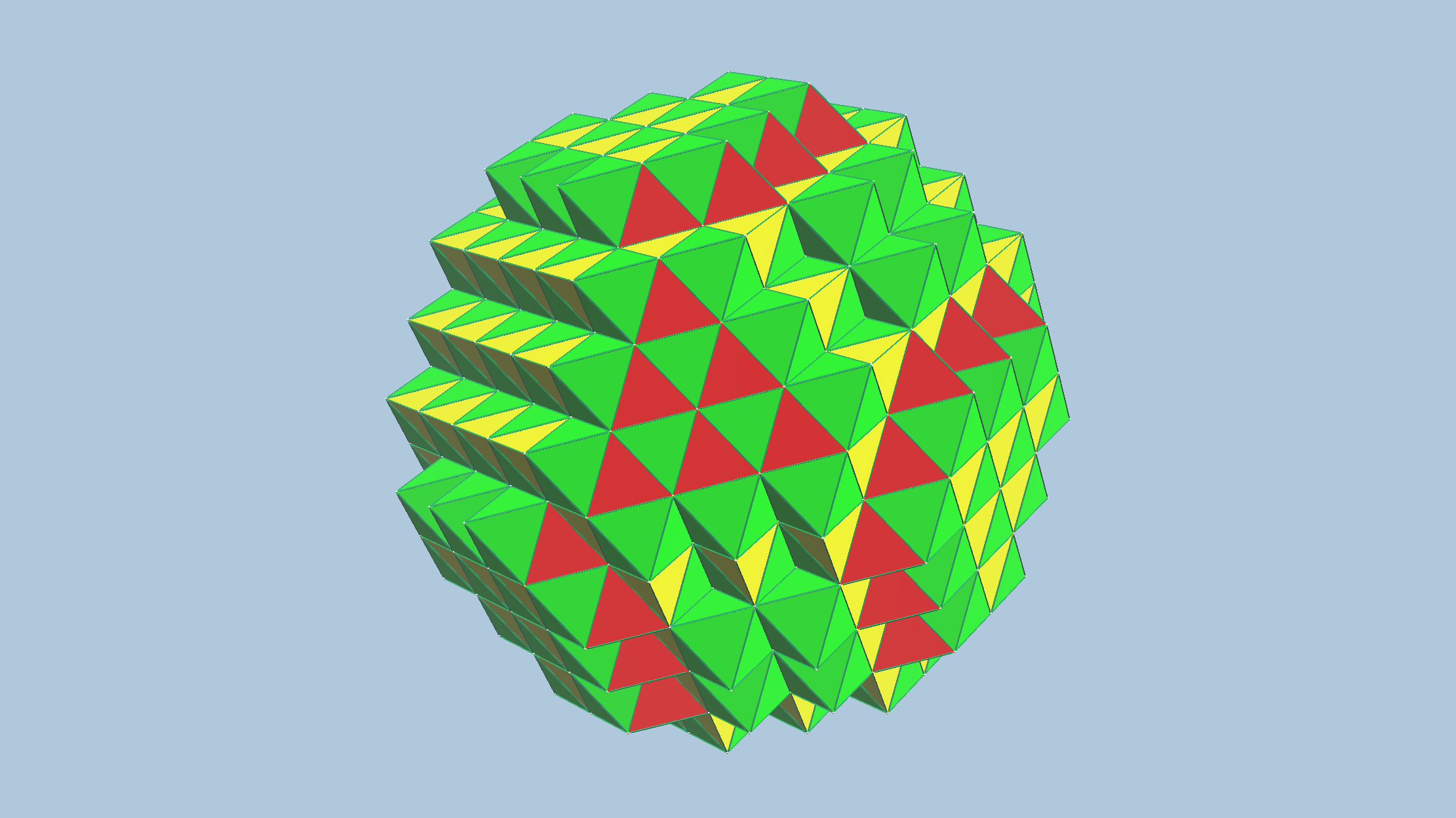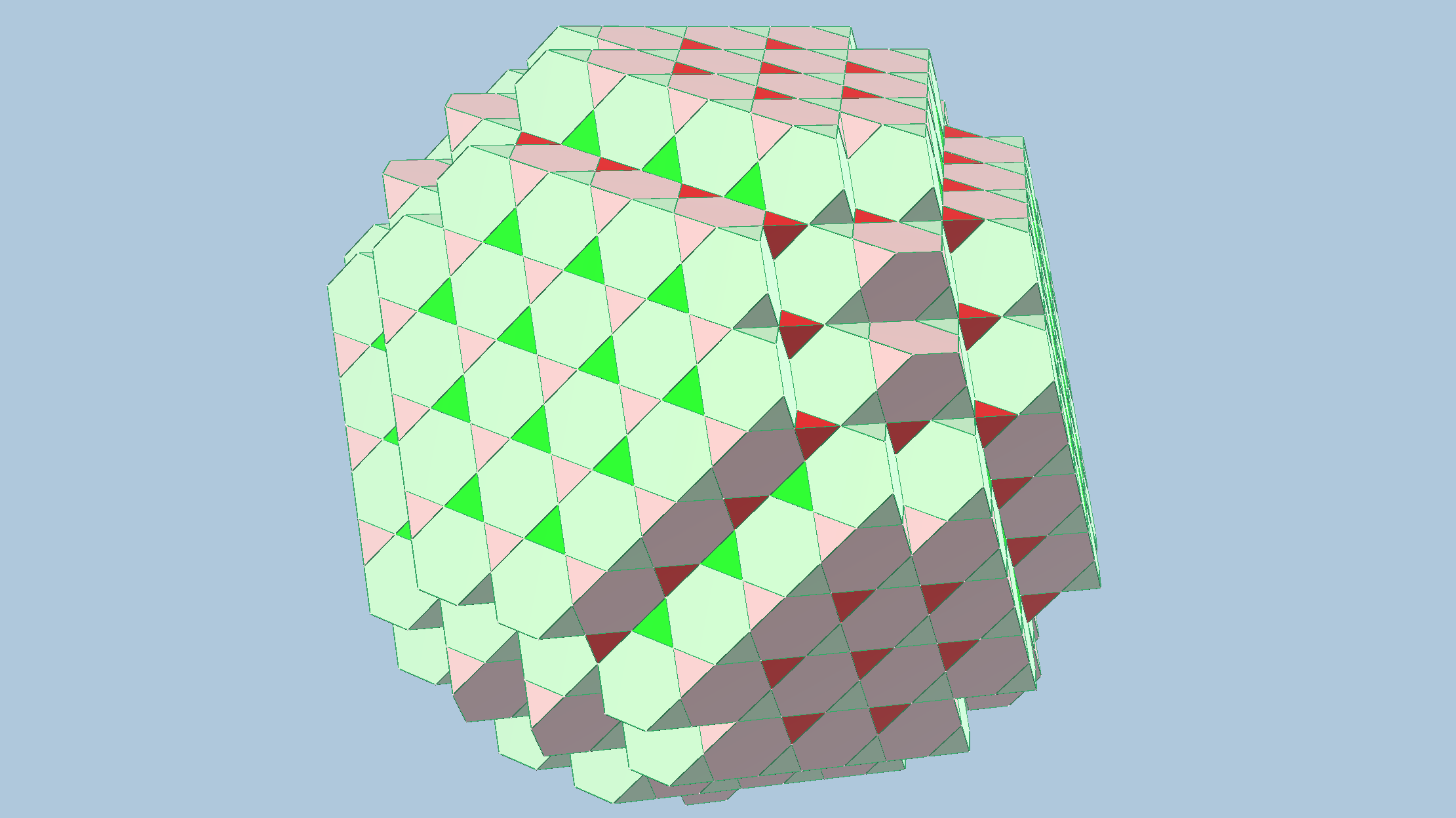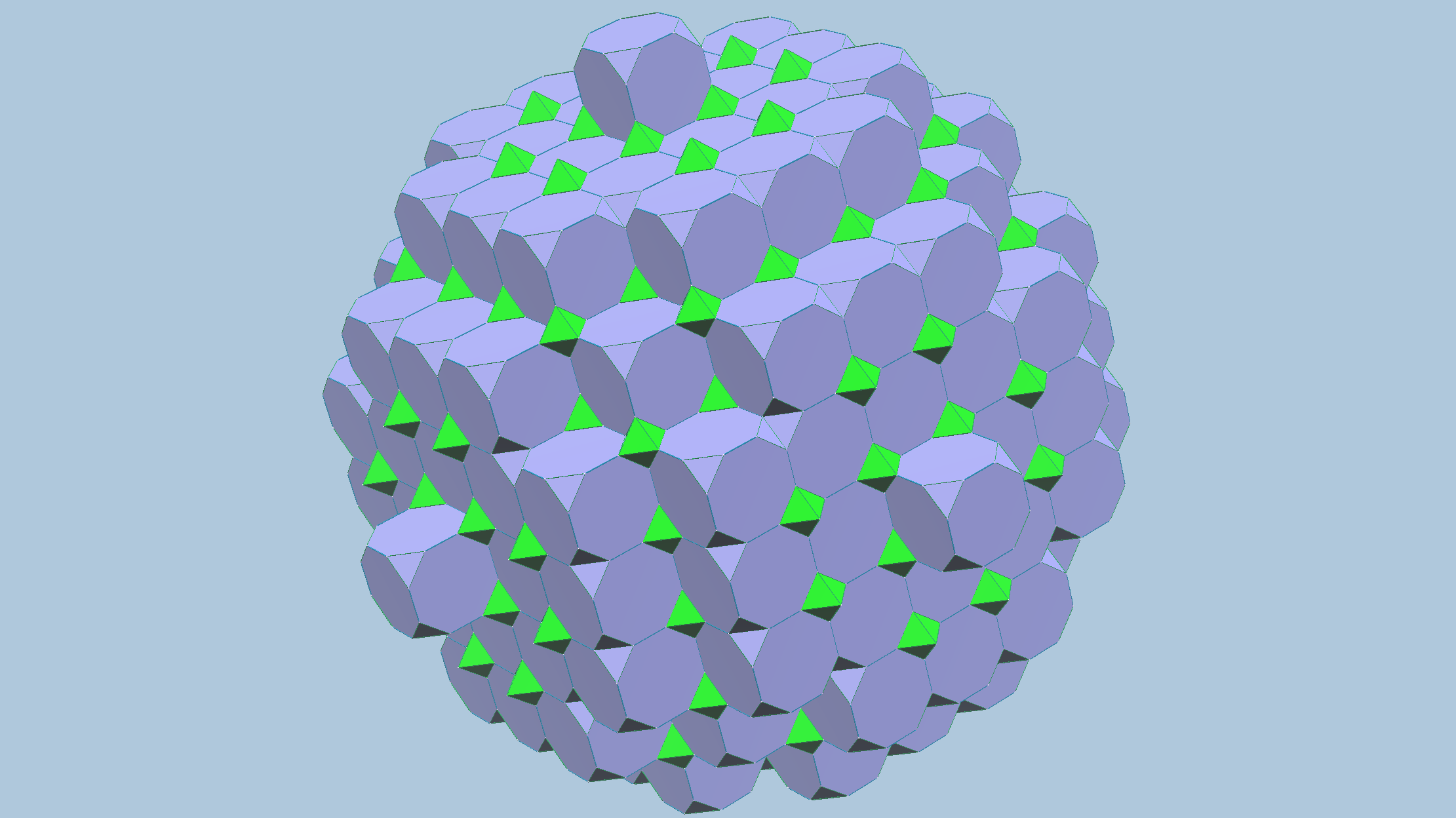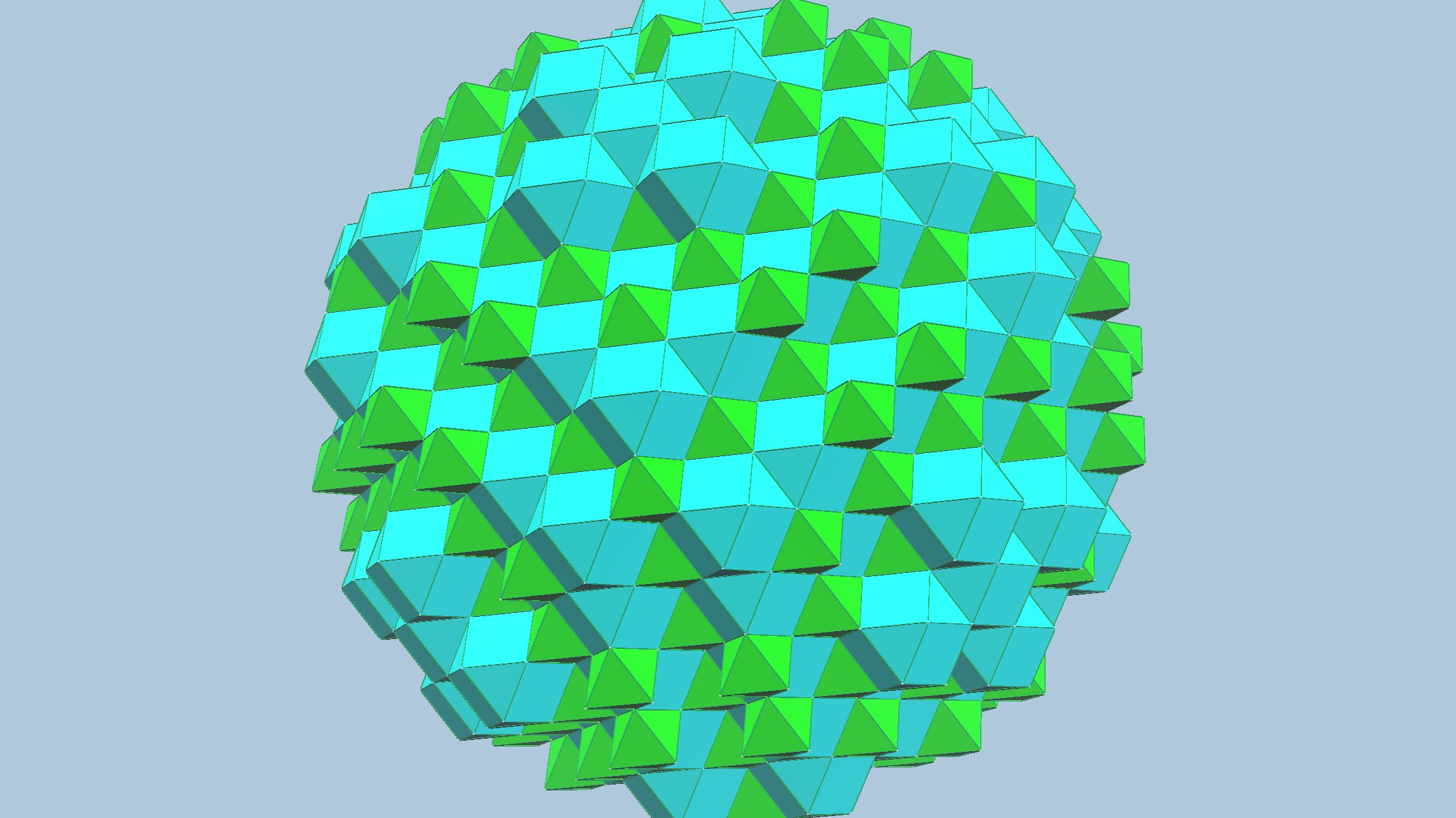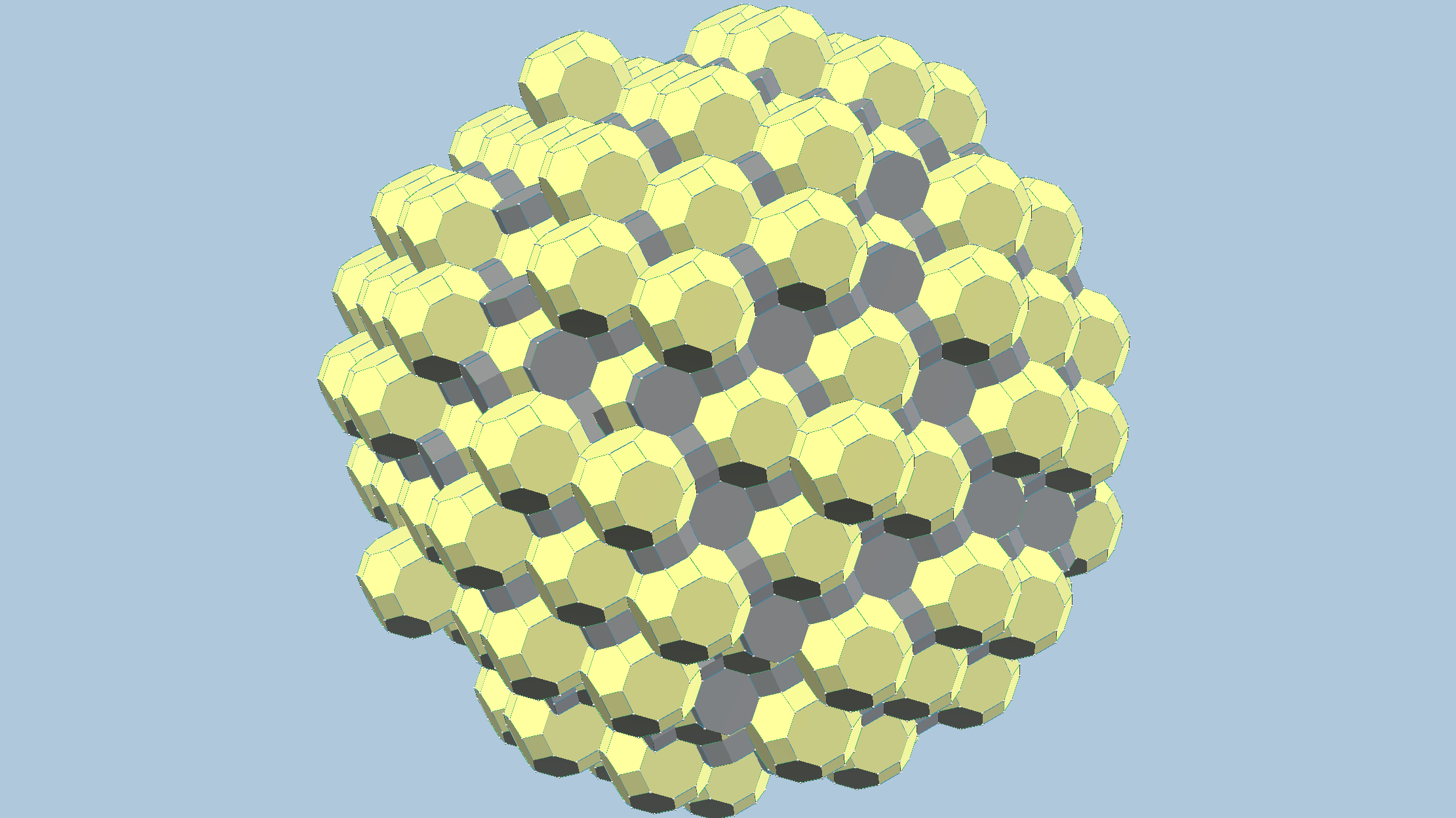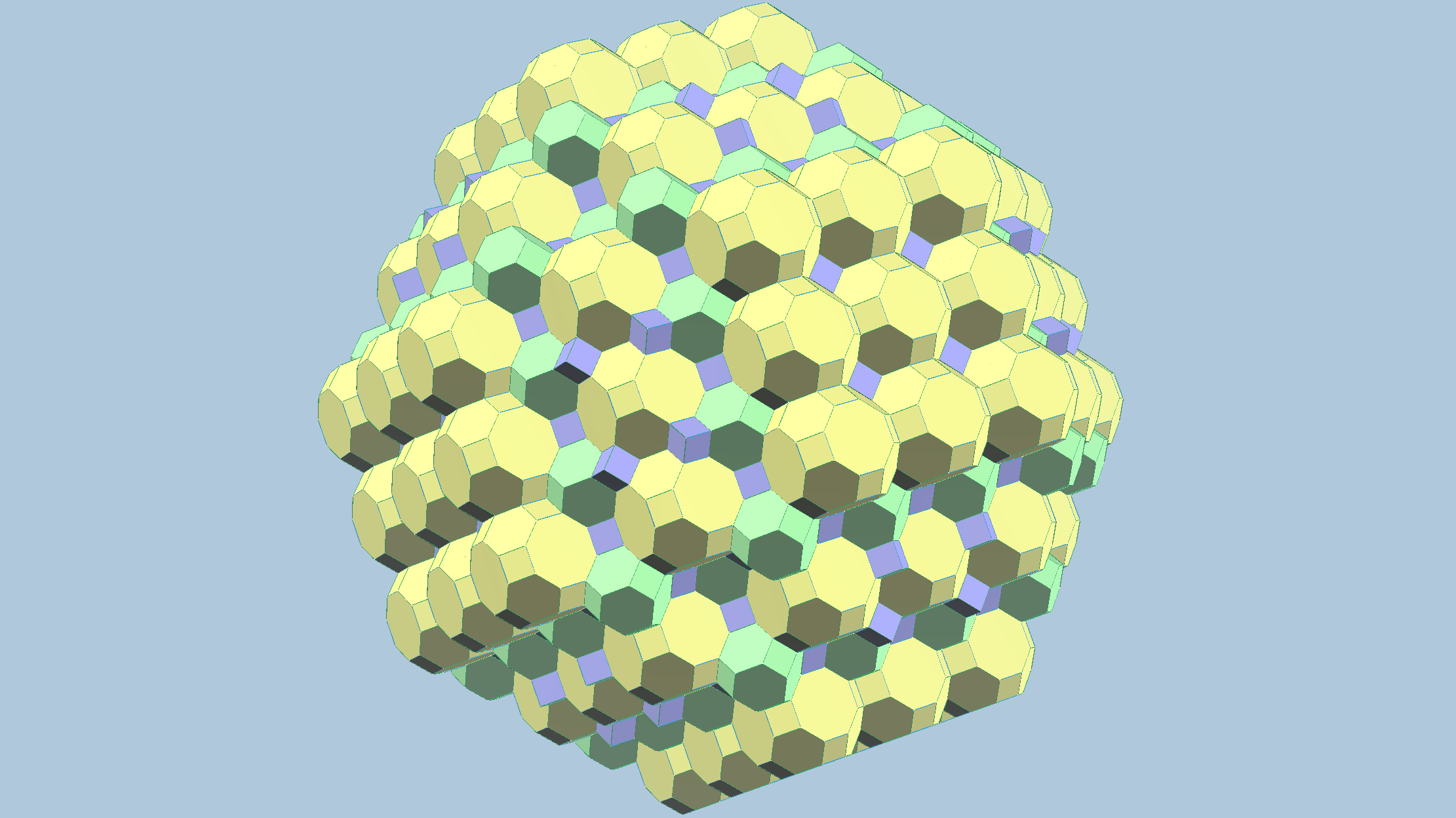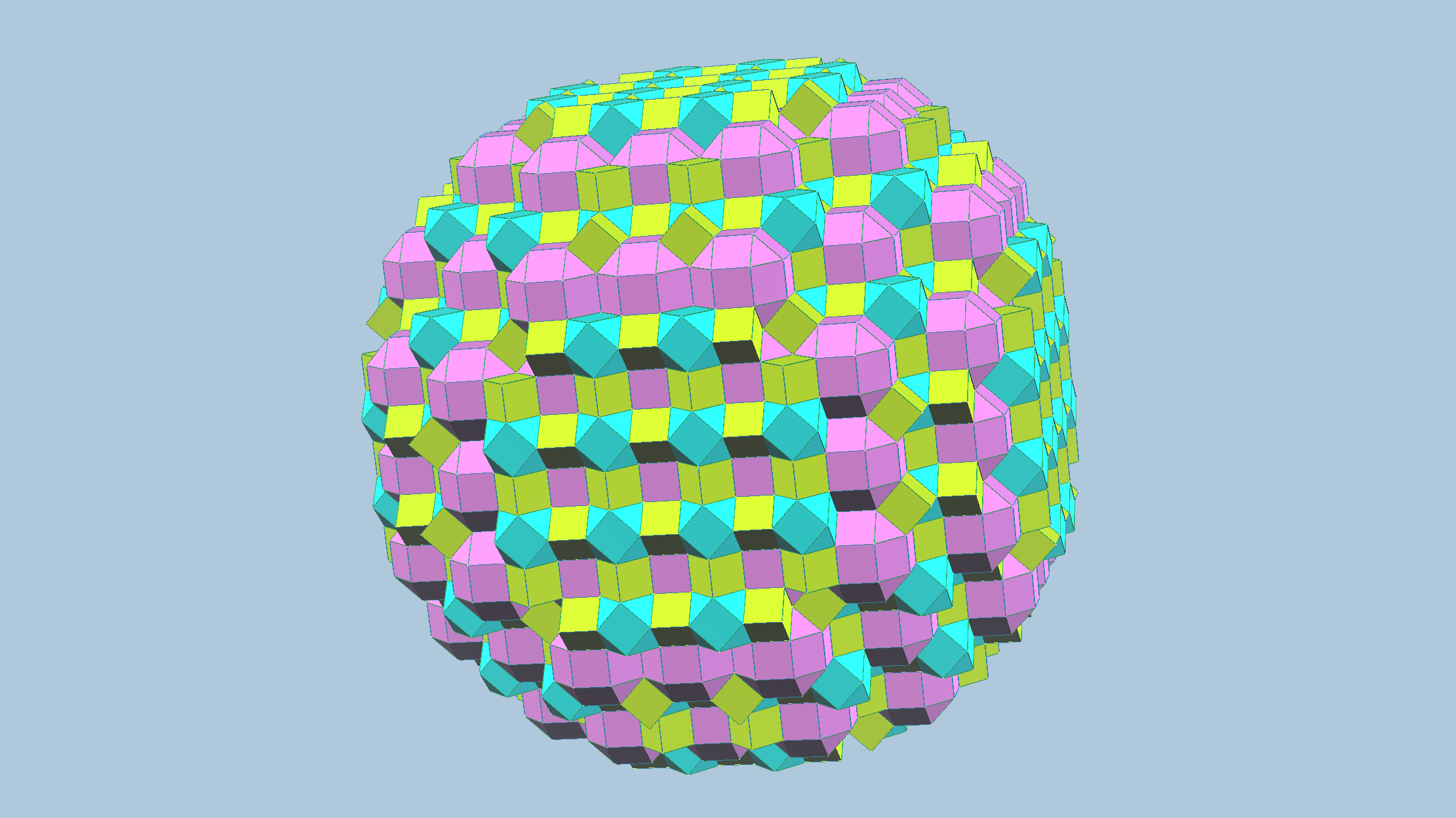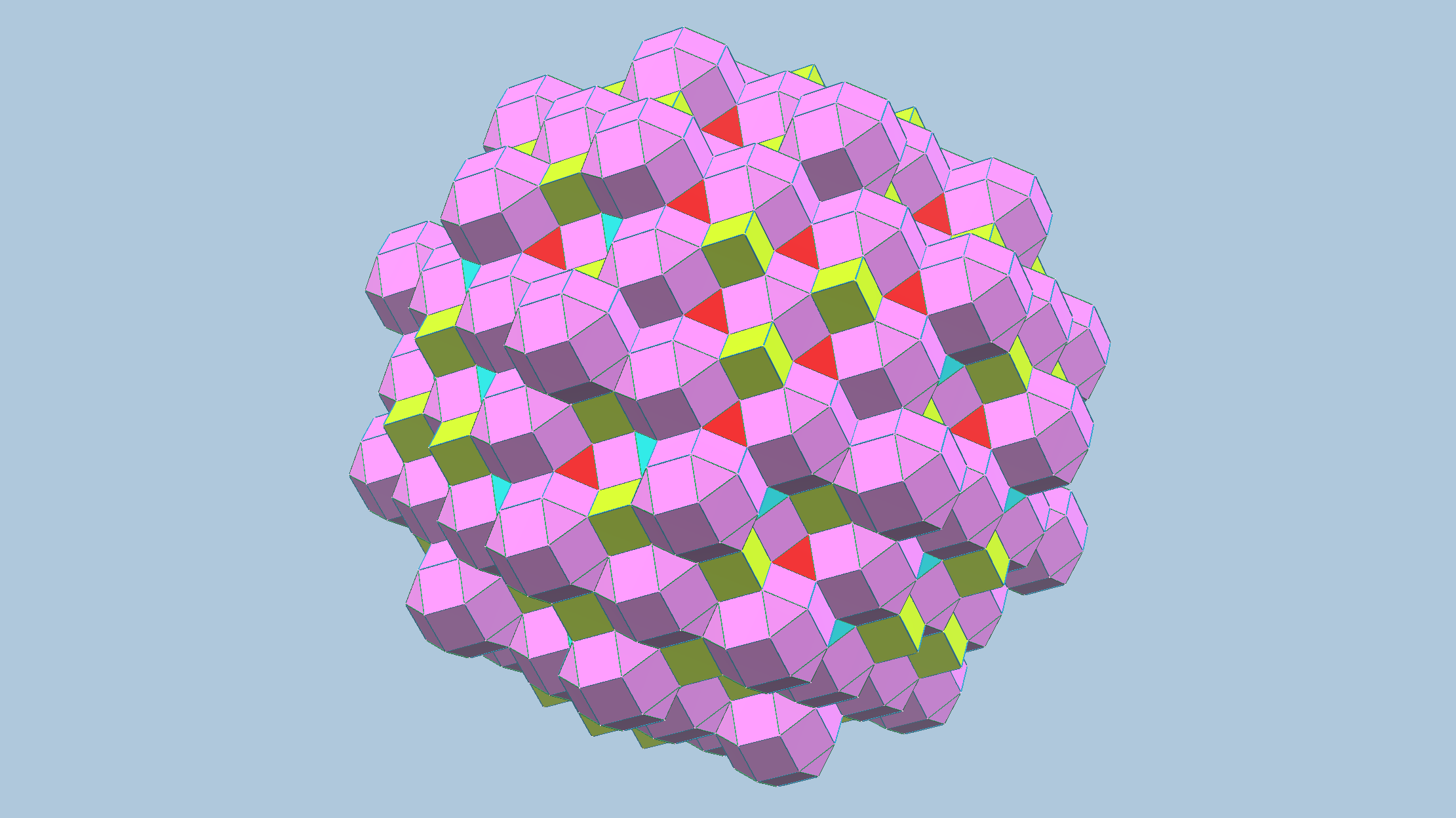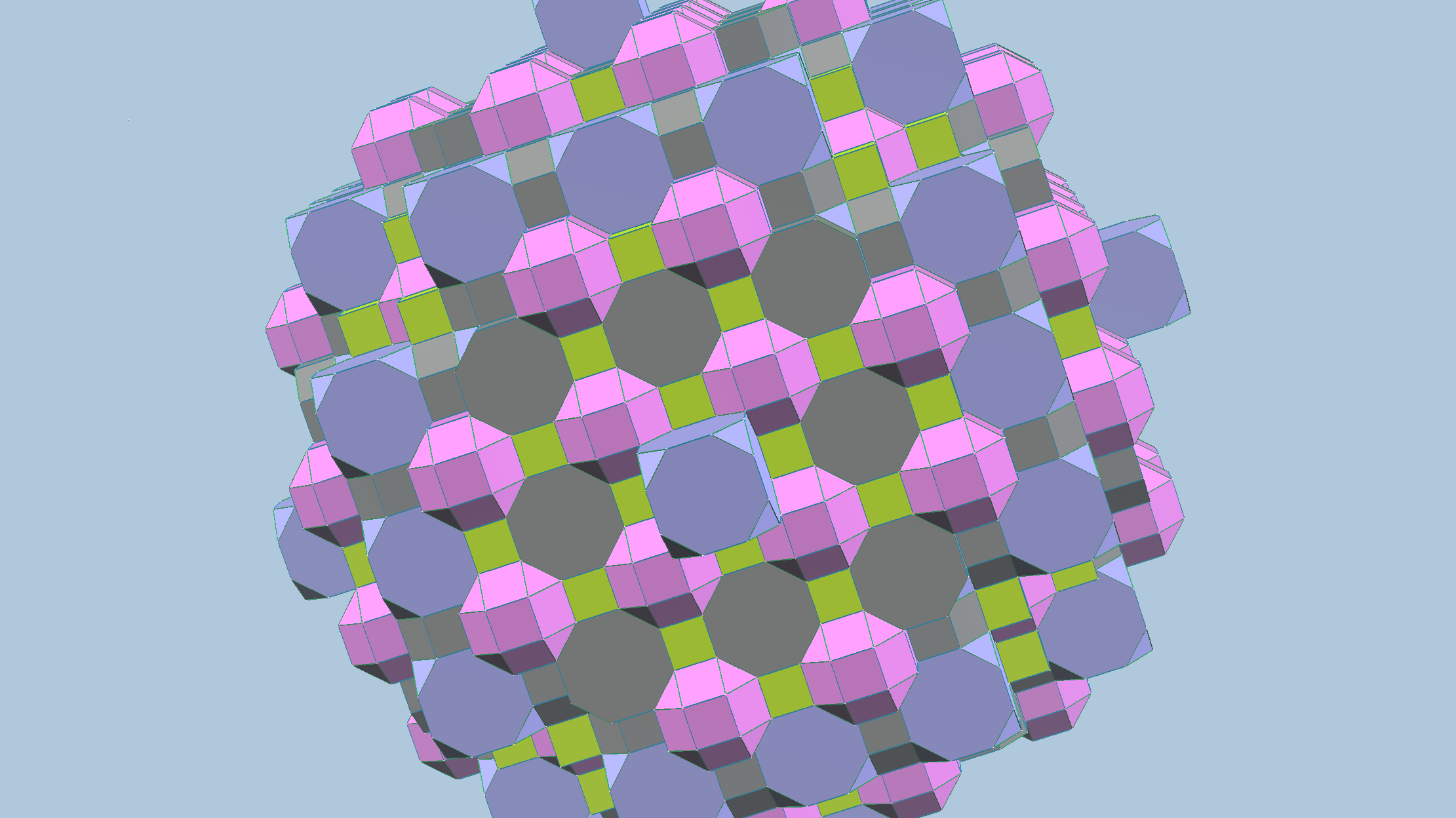In his book Structure in Nature is a Strategy for Design Peter Pearce enlisted 23 space filling systems requiring multiple different types of polyhedra. Of these 23, only eleven (systems 5, 6, 7, 8, 9, 16, 17, 18, 19 , 20 and 23) require no multiple prism packings and therefore do not give rise to infinite numbers of space filling permutations. Only four of these convex uniform honeycombs (systems 5, 6, 8 and 20) have coordinates in the golden field, and can be build with Zometool green struts only. I modeled the other seven with vZome using (38φ-53)/6 as an approximation for √2, which is off by less than 1/800000. These seven convex uniform honeycombs can also be build exactly with Zometool, if one is prepared to use both blue and blue-green struts.
The following vZome model includes four scenes for each of the eleven honeycombs: one for its building block, and three for the meshes in 1D, 2D and 3D respectively.
